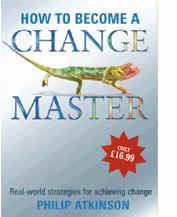Building a Robust High Performance (RHP) Culture

This RHP process has been devised to act as a major building block in developing a high performance business culture. The exercises can help support building a resilient corporate culture supporting many locations, functions, processes and even different geographies.
Purpose & Benefits
Rationale: De-Mystifying Culture Change
Unfortunately, most organisations have a business culture that has evolved by accident or default rather than created and designed to achieve the objectives of the business. Make no mistake, every organisation has a culture. Some are strong, some are weak, many are inappropriate for the challenges ahead and most managers do not have the technologies or the 'know how' to rejuvenate their culture.
The problem for most organisations is that, given the choice, those who manage the business would change their current culture today for a new vibrant culture that delivered outstanding results tomorrow but, because business people are so busy growing and running their business - the growth of the culture can be left on one side. A vibrant culture will not grow by accident. And although business culture is talked about a great deal few understand how to build and sustain a successful culture. A weak culture will yield poor results and negative attitudes, not just within the business, but also reflected by the negative response of customers. Left to its own devices a business with a weak culture will decline, in terms of profitability and customer loyalty. Without rejuvenation or radical surgery the business will not survive.
However, a strong and positive business culture based upon sound Values reflected in outstanding levels of performance will prosper. This organisation will grow exponentially and will make best use of the people at all levels. It will be focused upon achieving satisfaction for its customers, staff and shareholders. There is no doubt that, given the choice, most people would seek to work in this business than one with a strong negative or weak climate.
What do we need to do more of to build the RHP Culture?
Using the Model above it is relatively simple to examine the major components that contribute to creating the desired business culture. The secret that many business organisations cannot understand is the relationship between the components, how do they interact, the independent and dependent variables and what causes a culture to be created as a chained sequence.
A RHP culture can be rapidly built by adhering to a sequence of events and processes which, when carefully brought together, will highlight how any organisation can radically redesign and implement a new business culture.
Much of this work is not just based upon rigorous research but also on what the 'excellent' companies are undertaking in their own change management strategies. The work has been successfully applied in consultancy interventions and tailored to meet the special needs of particular businesses in a variety of contexts.
Tailored vs One Size Fits All
The Model is appropriate to all businesses - 'One Size Fits All'. However, the activities and the choice of tools that neatly fit within each of the six areas will be applied differently depending upon the special context of the business, namely its competitive position within its market, the relative size and complexity of business, the relative success of HR and change management strategies, and a risk assessment of the challenges the business faces.
How is RHP Applied?
Decide on the scope of RHP. Is it on small scale, perhaps establishing a new culture for a Call Centre, Customer Service Unit, Sales Team, or relating to a process? Is its scope Organisation wide, post merger or acquisition integration, forming joint ventures or operating across a number of diverse Geographies?
Decide on the degree of detail to be achieved. Are people using The RHP as a tool to debate the key issues for action or is there a commitment to use the full technology of the exercise to develop a detailed and sequenced action plan for change that will be presented to senior management for approval?
Decide on the purpose of the RHP exercise and the resources required to deliver results. Commit to agree the steps of the exercise and how it can be communicated and rolled out within the business and who has responsibility as sponsor and change agent.
RHP Process - working in Teams
Stage 1 Application of RHP: Defining the Project
Stage 2: What Core Values should drive this organisation?
What are the core Values that should drive performance in the organisation and how should these be prioritised? (We do what we value and value what we do). Values drive behaviour so you may want to consider what it is you want to get people doing more of and ……less of
Stage 3: Policies and Practices
What core policies and practices have to precede the process of cultural redesign? What policies will sustain cultural change? What policies will take your culture to the next level?
For more information use our Contact Form
Purpose & Benefits
- The culture is the infrastructure, the glue that bind together people and processes to generate results. The purpose of this RHP process is to enable much faster generation of a business culture that enables people to achieve results. In particular the RHP will:
- Provide a 'visual map' of the building blocks of culture building from Vision to KPI's (Key Performance Indicators)
- Highlight and identify the core values that drive behaviours
- Enable participants to focus upon a sequence of key stages and activities to build, rejuvenate or generate a desired culture
- Provide participants with a roadmap of activities to pursue, apply and implement within their own organisation.
- Identify the precise components of a business culture that will cause significant business improvement
- The RHP process can be used at various levels within the organisation - or used in smaller business units, functions or across processes to refine performance and build strong committed teams who will implement, sustain, measure and pursue relentless improvement.
Rationale: De-Mystifying Culture Change
Unfortunately, most organisations have a business culture that has evolved by accident or default rather than created and designed to achieve the objectives of the business. Make no mistake, every organisation has a culture. Some are strong, some are weak, many are inappropriate for the challenges ahead and most managers do not have the technologies or the 'know how' to rejuvenate their culture.
The problem for most organisations is that, given the choice, those who manage the business would change their current culture today for a new vibrant culture that delivered outstanding results tomorrow but, because business people are so busy growing and running their business - the growth of the culture can be left on one side. A vibrant culture will not grow by accident. And although business culture is talked about a great deal few understand how to build and sustain a successful culture. A weak culture will yield poor results and negative attitudes, not just within the business, but also reflected by the negative response of customers. Left to its own devices a business with a weak culture will decline, in terms of profitability and customer loyalty. Without rejuvenation or radical surgery the business will not survive.
However, a strong and positive business culture based upon sound Values reflected in outstanding levels of performance will prosper. This organisation will grow exponentially and will make best use of the people at all levels. It will be focused upon achieving satisfaction for its customers, staff and shareholders. There is no doubt that, given the choice, most people would seek to work in this business than one with a strong negative or weak climate.
What do we need to do more of to build the RHP Culture?
Using the Model above it is relatively simple to examine the major components that contribute to creating the desired business culture. The secret that many business organisations cannot understand is the relationship between the components, how do they interact, the independent and dependent variables and what causes a culture to be created as a chained sequence.
A RHP culture can be rapidly built by adhering to a sequence of events and processes which, when carefully brought together, will highlight how any organisation can radically redesign and implement a new business culture.
Much of this work is not just based upon rigorous research but also on what the 'excellent' companies are undertaking in their own change management strategies. The work has been successfully applied in consultancy interventions and tailored to meet the special needs of particular businesses in a variety of contexts.
Tailored vs One Size Fits All
The Model is appropriate to all businesses - 'One Size Fits All'. However, the activities and the choice of tools that neatly fit within each of the six areas will be applied differently depending upon the special context of the business, namely its competitive position within its market, the relative size and complexity of business, the relative success of HR and change management strategies, and a risk assessment of the challenges the business faces.
How is RHP Applied?
Decide on the scope of RHP. Is it on small scale, perhaps establishing a new culture for a Call Centre, Customer Service Unit, Sales Team, or relating to a process? Is its scope Organisation wide, post merger or acquisition integration, forming joint ventures or operating across a number of diverse Geographies?
Decide on the degree of detail to be achieved. Are people using The RHP as a tool to debate the key issues for action or is there a commitment to use the full technology of the exercise to develop a detailed and sequenced action plan for change that will be presented to senior management for approval?
Decide on the purpose of the RHP exercise and the resources required to deliver results. Commit to agree the steps of the exercise and how it can be communicated and rolled out within the business and who has responsibility as sponsor and change agent.
RHP Process - working in Teams
Stage 1 Application of RHP: Defining the Project
- Consider the demands and challenges facing this organisation.
- What are the major threats and opportunities that exist in the short and longer term?
- What assumptions are you making about shareholders and customers?
- What are your competitors doing?
- Where do you think your business is most at risk?
- What assumptions are you making about the culture of the business? (if you are applying this to a specific organisation you will have data, reports and will be able to access other projects which have attempted to remedy the problem).
Stage 2: What Core Values should drive this organisation?
What are the core Values that should drive performance in the organisation and how should these be prioritised? (We do what we value and value what we do). Values drive behaviour so you may want to consider what it is you want to get people doing more of and ……less of
Stage 3: Policies and Practices
What core policies and practices have to precede the process of cultural redesign? What policies will sustain cultural change? What policies will take your culture to the next level?
For more information use our Contact Form

